The Fascinating Life of Giraffes
Let’s unravel the extraordinary facts and curiosities surrounding the world’s tallest mammals. Prepare to be amazed as we delve into the fascinating realm of these gentle giants and uncover the secrets of their towering stature and unique biology.

Height and Weight
Giraffes hold the title of being the tallest living mammals on Earth. Male giraffes, known as bulls, can soar to heights of up to 18 feet and weigh a staggering 3,000 pounds. Female giraffes, or cows, are slightly smaller, reaching around 15 feet and weighing approximately 1,600 pounds. Remarkably, even at birth, a baby giraffe, known as a calf, stands tall at about 6 feet and weighs 125 to 150 pounds, making them one of the most impressive newborns in the animal kingdom.

Giraffe Groups
A gathering of giraffes is not just any ordinary congregation – it’s a tower when they’re stationary and a journey when they’re moving. Whether standing tall or gracefully navigating their habitat, giraffes exude elegance and grace in their collective presence.
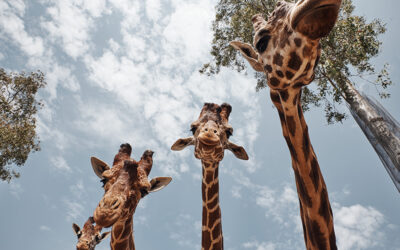
Lifespan
The journey of a giraffe spans decades, with males typically living 14 to 16 years and females enjoying a longer lifespan of 20 to 25 years. These majestic creatures gracefully navigate the savannas, leaving an indelible mark on their surroundings.
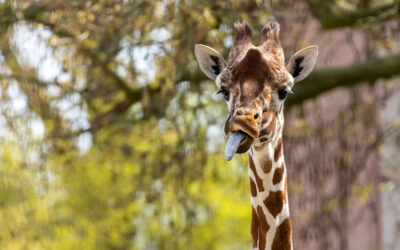
Tongue and Tails
The giraffe’s tongue is a marvel of nature, measuring an impressive 18 to 20 inches long and boasting black, blue, or purple hues. Equipped with a prehensile tongue, giraffes adeptly grasp and manipulate objects, effortlessly plucking leaves and shoots from even the thorniest plants. Their remarkable tongues complement their lengthy tails, the longest of any mammal, ranging from 32 to 40 inches.
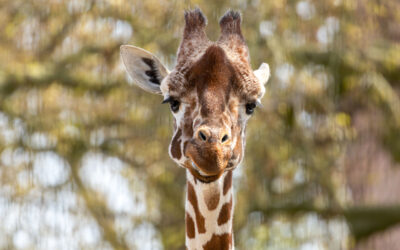
Ossicones
Often mistaken for horns, the ossicones are cartilage protrusions covered in skin or fur. These unique features start soft and flat at birth but soon harden and stand proudly atop the calf’s head, adding to their distinctive appearance.
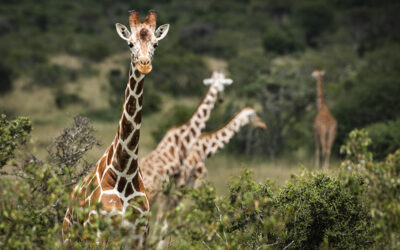
Heart and
Circulatory System
Beneath their towering exterior lies a heart that measures up to 2 feet in length and weighs approximately 21.5 pounds. Their big heart beats an astonishing 150 times per minute. With blood pressure twice that of a human, giraffes maintain efficient circulation throughout their impressive bodies.

Reproduction
and Birth
The journey to parenthood for giraffes is unique, with males relying on the taste of the female’s urine to determine their readiness to mate. After a gestation period of approximately 15 months, female giraffes give birth standing up, with calves experiencing the longest drop to the ground of any animal – about 6 feet. Remarkably, newborn calves can stand and join the journey within just one hour of birth, a testament to their resilience and adaptability.

Giraffe Sounds
While often described as silent giants, giraffes are not without their vocalizations. From bleats and grunts to snorts and even humming, these majestic creatures communicate through a rich array of sounds, including infrasound frequencies beyond the range of human hearing.
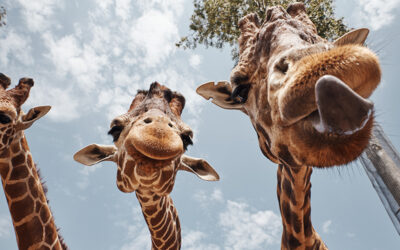
Social Structure
Giraffes navigate their world through a complex social structure known as “fission/fusion,” where social groups dynamically change in size and composition. From forming temporary sub-groups for activities like sleeping to splitting off into different groups for foraging, giraffes exemplify adaptability and social complexity in their daily lives.